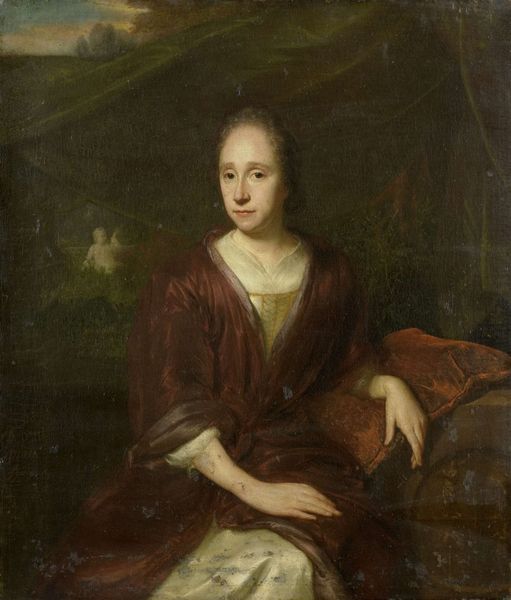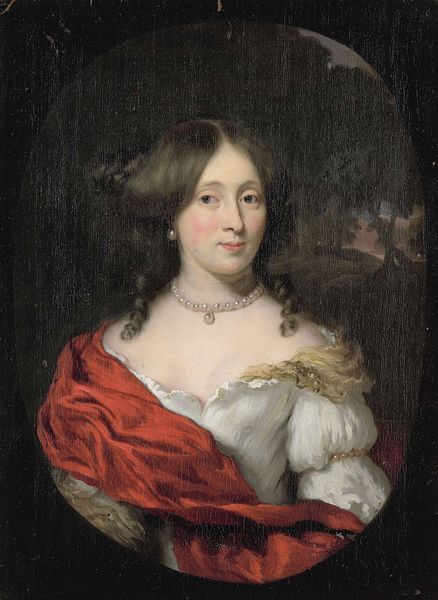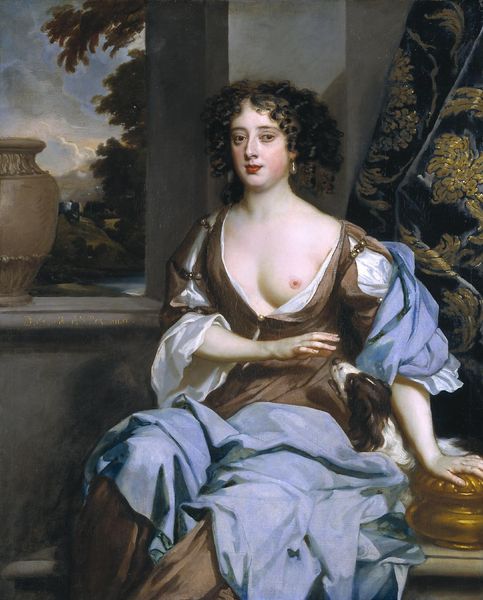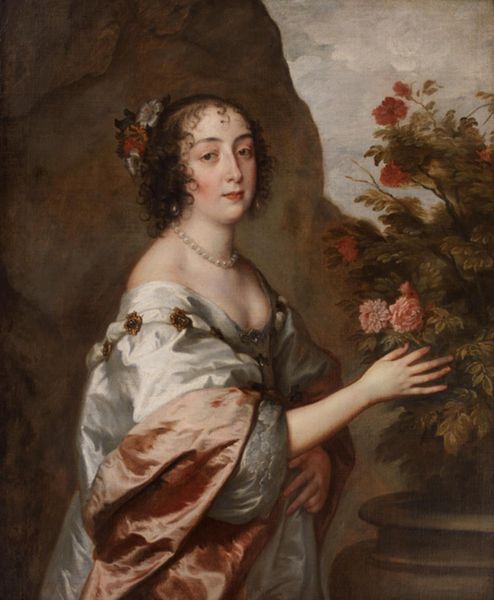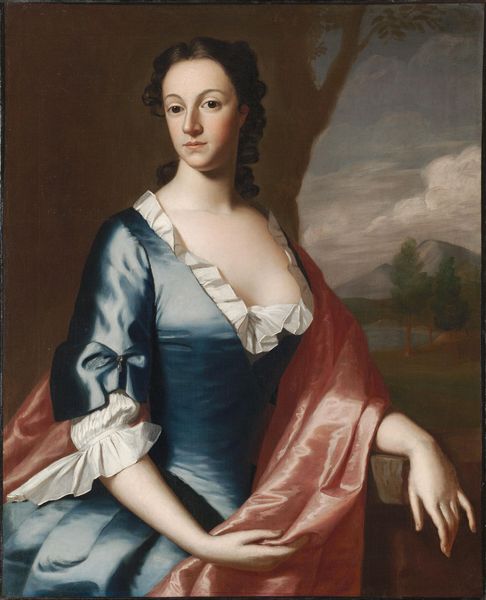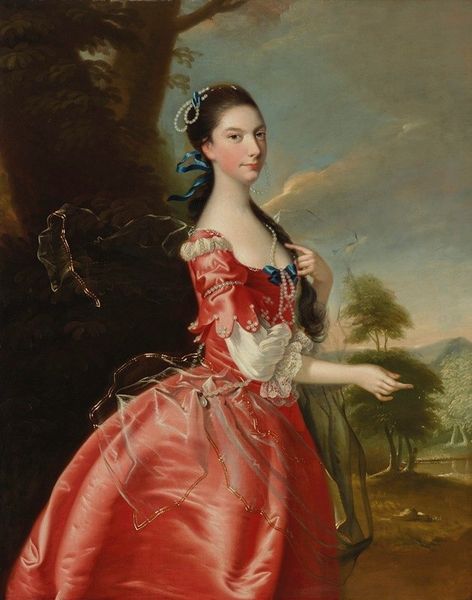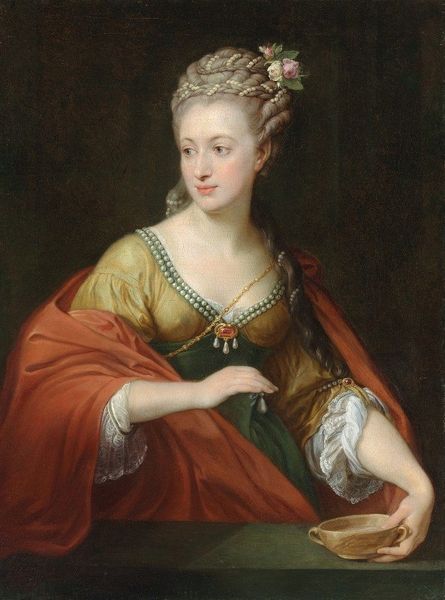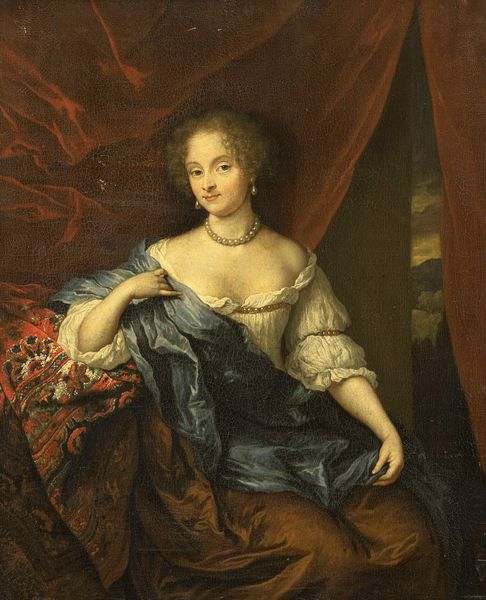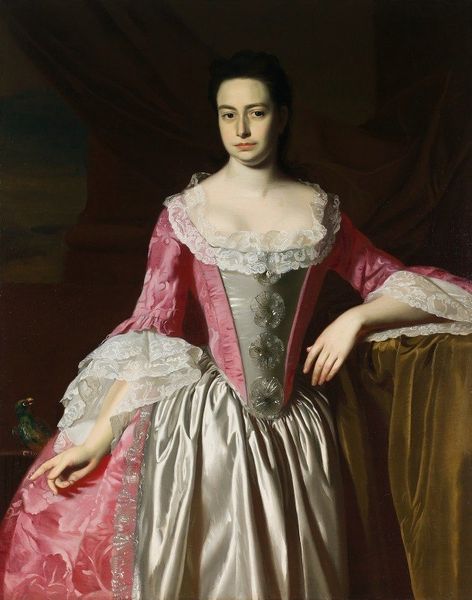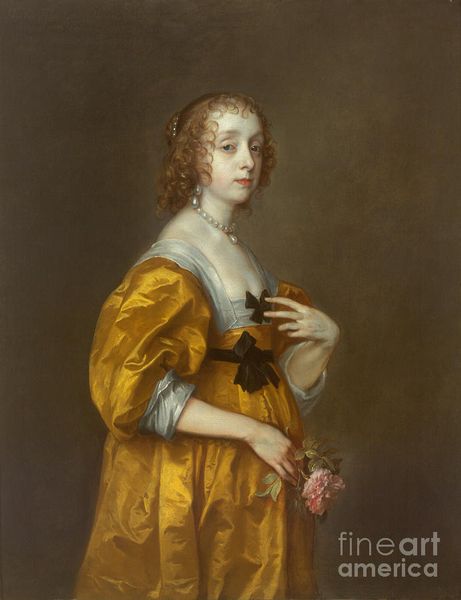
oil-paint
#
portrait
#
figurative
#
fancy-picture
#
oil-paint
#
figuration
#
genre-painting
#
rococo
Copyright: Public Domain: Artvee
Curator: John Singleton Copley painted this portrait of Mrs. Jerathmael Bowers around 1763, capturing a prominent woman of the colonial elite. Editor: Immediately striking is the contrast. Her pale complexion, luminous dress, and that fluffy little dog practically glow against the moody, undefined background. Curator: Copley situates Mrs. Bowers within a visual language of wealth and leisure. The inclusion of the dog speaks volumes about her social standing— these dogs, likely a Japanese Chin, were luxury commodities for elite European and American women. The way she is positioned also mirrors power dynamics that would define colonial society, Editor: You can see how Copley masterfully plays with light and texture. Look at the satin of her dress; how the light catches the folds, creating a sense of depth and volume. It's not just about rendering fabric but also about implying its sumptuousness, its quality. Curator: And that dress becomes a symbol of how Mrs. Bowers could assert herself within the confines of colonial expectations. Fashion was performative in this period— it signaled identity, class, and even political leanings. It may look elegant, but for many women it was a daily performance and another way of defining their position. Editor: There's an intriguing ambiguity in her gaze too. She looks away, as if distracted or lost in thought, giving us only a glimpse of interiority and adding to the portrait's subtle energy. She may be seated, but in composition she dominates and possesses a certain movement with how she is subtly framed. Curator: These portraits often served as tools of self-representation. Commissioning Copley—then considered the pre-eminent painter of his day—was a strategic move. Portraits memorialized individuals but, more importantly, legitimized family power and social capital. Editor: Precisely. I appreciate how this painting allows a moment of technical and theoretical divergence that enhances the complexity of meaning we draw from these pieces. Curator: Right. There's much to discuss here, especially considering the ongoing conversations around portraiture as not just art, but cultural commentary.
Comments
No comments
Be the first to comment and join the conversation on the ultimate creative platform.


